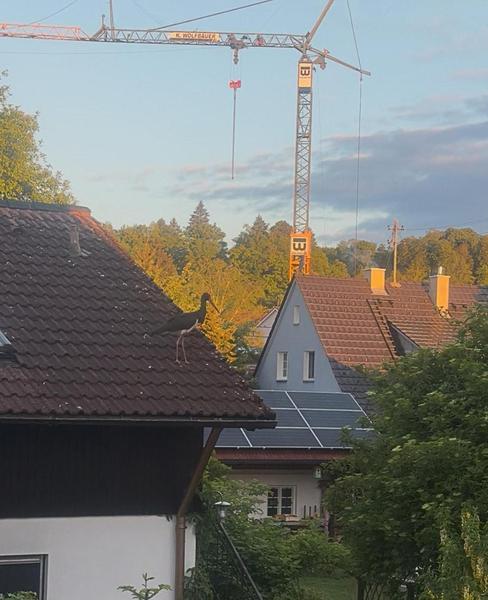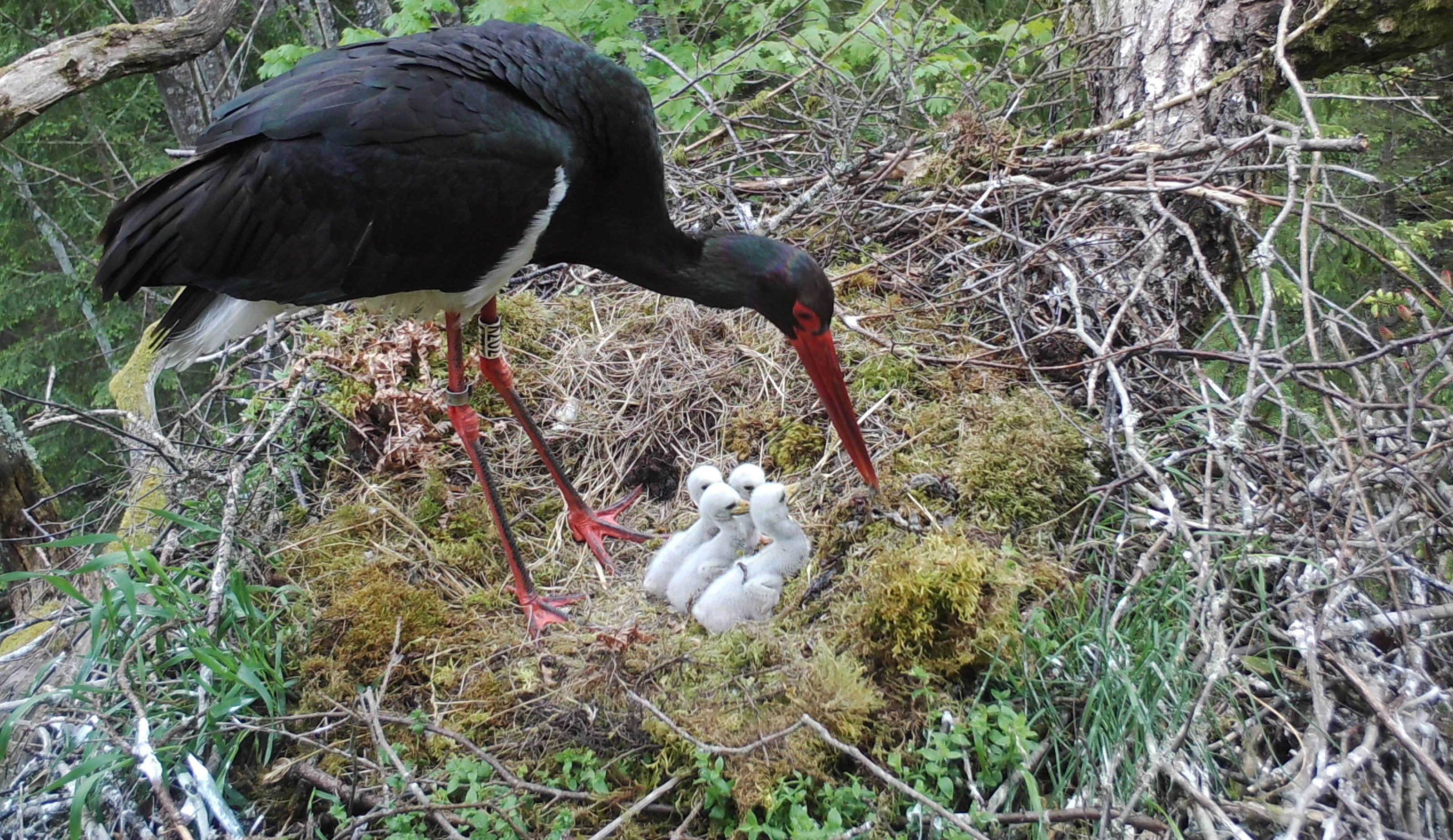GERMANY
"Quite unusual" – Shy bird rarity appears in the middle of town
By: Josef Ametsbichler
Last updated:
June 16, 2025, 4:50 a.m.

Black storks are usually far too shy for the city center. However, this one stopped by the Grafing parish church after apparently searching for food at the Wieshamer Bach stream. © Johannes Pregler
A good 100 years ago, the black stork was almost extinct in Bavaria. In the region, the rare, and quite shy, bird has now re-established itself – and is increasingly being seen in more bustling locations.
Grafing/Aßling – Johannes Pregler from Grafing made an astonishing birdwatching discovery: He photographed a black stork right in the middle of town, in a quiet corner behind the parish church. "Since this is definitely not its typical habitat, I couldn't believe what I was seeing at first," he wrote to the editorial staff. A similar snapshot was taken in May by EZ reader Stephan Obermüller in Aßling, where a black stork appeared on a rooftop near Bahnhofstrasse in the morning.
"Quite unusual": Bird conservationist delighted by sightings
Benedikt Sommer from the Bavarian Society for the Protection of Birds is surprised and delighted by the sightings. "It's quite unusual for the black stork to appear in a populated area," he told the editorial staff. "They usually value their privacy and are difficult to find."
Surprise visitor: a black stork not far from Aßling's Bahnhofstrasse, where white storks like to perch on a construction crane.

There are a handful of nests in larger wooded areas of the region, where they can sometimes be seen circling. However, there is no confirmed breeding record for the Ebersberg Forest, for example, according to Sommer. Conservationists prefer not to publicly reveal the known nesting locations of the black stork to avoid stork tourism, which could, in the worst-case scenario, drive away the shy, rare birds.
Black stork almost extinct in the region 100 years ago
According to the Bavarian Society for the Protection of Birds (LBV), the black stork was completely extinct in Bavaria just over 100 years ago. Over the past decades, it has slowly regained a foothold in the Alpine foothills. "Things are looking up a bit; perhaps it's taking its cues from the white stork," speculates Sommer from the LBV district group. The white stork was also almost extinct in the region, but now there is a healthy population again. Bird lovers are currently delighted by the abundance of stork offspring in the often highly visible nests from Markt Schwaben to Grafing.
(By the way: You can now find everything from the region in our regular Ebersberg newsletter.)
However, Benedikt Sommer is reluctant to offer a numerical estimate for its rarer relative, the black stork, as the number of sightings is too limited. "It's still a rarity here," he says. The bird usually nests deep in the forest, often in the crowns of fallen trees, where it is almost impossible to spot.
Rare stork possibly out foraging
"Nothing out of the ordinary," is Sommer's assessment of the stork sightings in Aßling. "That surprises me." It's conceivable that individual specimens of this rare species have learned that there is a food supply within the town. Whether the birds seen in Aßling and Grafing are the same cannot be definitively determined from the available images.
The foraging theory is supported by the observation of Johannes Pregler, who first saw the rare bird walking along the Wieshamer Bach near the church early in the morning. "An extraordinary sighting," says the Grafing resident. Perhaps, however, there is a chance that such sightings will occur more frequently in the future.
Source : Merkur.de -
https://www.merkur.de/lokales/ebersberg ... 81824.html



